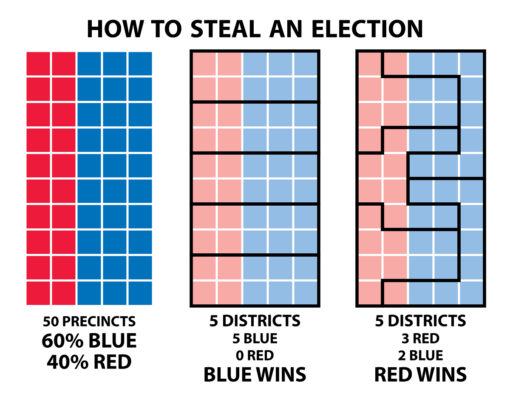Last May (2018) we shared that Ohio voters approved an initiative for gerrymandering reform, with plans to push forward the approved reform in 2021. This week, those efforts were boosted when a U.S. federal court ruled that the states current congressional map is illegal.
The judges in this case stated that, ‘Partisan gerrymandering’ occurs when the dominant party in government draws district lines to entrench itself in power and to disadvantage the disfavored party’s voters.”
After the American Civil Liberties Union (ACLU) filed and argued this Ohio case, the federal court deemed that the current congressional map was drawn intentionally with partisan favor given to gaining and maintaining as many Republican seats as possible.
The New York Times reports, “A federal court on Friday tossed out Ohio’s congressional map, ruling that Republican state lawmakers had carved up the state to give themselves an illegal partisan advantage and to dilute Democrats’ votes in a way that predetermined the outcome of elections.”
The judges unanimously agreed on the ruling, and in their opinion wrote, “In this case the bottom line is that the dominant party in state government manipulated district lines in an attempt to control electoral outcomes and thus direct the political ideology of the state’s congressional delegation.’’
The decision will go next to the Supreme Court, which has yet to make a ruling on whether partisan gerrymandering will be upheld as constitutionally allowable. However, even before then the Supreme Court will review similar appeals from Maryland and North Carolina this spring If successful, these cases will push us closer towards outlawing partisan gerrymandering altogether. Federal courts have already ruled in Wisconsin, North Carolina, Maryland, and Michigan that partisan gerrymandering is illegal.
Following this current ruling and the ballot initiative passed last year, will be redistricting and creating new congressional maps after the 2020 census. The state will have to develop a temporary plan for the 2020 election, leaving Ohio free to restore it’s democracy and renew the influence of their citizen’s true interests and the power of their votes. Prior to Friday’s ruling, Ohio’s voters represented a swing state, with often close elections, and yet their representatives were 75% Republican.
What are your state’s policies on gerrymandering? How might our elections change for the better if the Supreme Court rules partisan gerrymandering unconstitutional?

Peter Schulte
Purpose Coach
Bellingham WA, USA / Lummi & Nooksack lands
Purpose statement: I reveal a world of beauty and goodness
Good News Newsletter
The latest laws, policies, science, and technology leading the way toward a brighter future